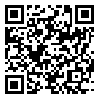جلد 11، شماره 2 - ( 1-1401 )
جلد 11 شماره 2 صفحات 13-7 |
برگشت به فهرست نسخه ها
Download citation:
BibTeX | RIS | EndNote | Medlars | ProCite | Reference Manager | RefWorks
Send citation to:



BibTeX | RIS | EndNote | Medlars | ProCite | Reference Manager | RefWorks
Send citation to:
Jabbari Sendi M J, Vadiati Saberi B, Rahi D. Evaluation of microbial
contamination of tooth brush and its related factors. Journal title 2022; 11 (2) :7-13
URL: http://3dj.gums.ac.ir/article-1-526-fa.html
URL: http://3dj.gums.ac.ir/article-1-526-fa.html
Evaluation of microbial
contamination of tooth brush and its related factors. عنوان نشریه. 1401; 11 (2) :7-13
چکیده: (1577 مشاهده)
Abstract
Introduction: Toothbrushes can have a significant role in the transmission of diseases. This study aimed to assess the type and amount of toothbrush microbial contamination and the associated factors.
Materials and Methods: In this comparative cross-sectional descriptive study, 36 students were randomly selected. A modified bass brushing technique was prescribed and participants were given a toothbrush and toothpaste in a sterilized package. After five days, the brushes were gathered and the bristles were stored in Nutrient Broth. Specimens were inseminated in blood Agar, chocolate agar, and Mac conkey medias. Biochemical and microbiological tests were performed and bacterias were identified. Contaminations with <10,000 colonies were considered as low contaminated, between 10,000 to 30,000 colonies were considered as medium contaminated, and 30,000<
colonies were considered as highly contaminated. Data were analyzed using SPSS 16 by
applying Kruskal-Wallis and Fisher tests at a significance level of 0.05.
Results: 16(44.4%) toothbrushes belonged to females and 20 (55.6%) to males. The average age of participants was 23.70±2.43. All the toothbrushes were contaminated. Streptococcus Mutans had the highest and Streptococcus Sanguis had the lowest levels. A significant relation was observed between the amount of toothbrush contamination and toothbrush storage place, time of flossing, usage of mouthwash, brushing the palate and tongue, drying the toothbrush, washing with warm water, and having a cap.
Conclusion: Sufficient care should be taken in the storage, washing, and drying of the toothbrush; using mouthwash; brushing the tongue, and not using toothbrush caps to prevent toothbrush contamination.
Introduction: Toothbrushes can have a significant role in the transmission of diseases. This study aimed to assess the type and amount of toothbrush microbial contamination and the associated factors.
Materials and Methods: In this comparative cross-sectional descriptive study, 36 students were randomly selected. A modified bass brushing technique was prescribed and participants were given a toothbrush and toothpaste in a sterilized package. After five days, the brushes were gathered and the bristles were stored in Nutrient Broth. Specimens were inseminated in blood Agar, chocolate agar, and Mac conkey medias. Biochemical and microbiological tests were performed and bacterias were identified. Contaminations with <10,000 colonies were considered as low contaminated, between 10,000 to 30,000 colonies were considered as medium contaminated, and 30,000<
colonies were considered as highly contaminated. Data were analyzed using SPSS 16 by
applying Kruskal-Wallis and Fisher tests at a significance level of 0.05.
Results: 16(44.4%) toothbrushes belonged to females and 20 (55.6%) to males. The average age of participants was 23.70±2.43. All the toothbrushes were contaminated. Streptococcus Mutans had the highest and Streptococcus Sanguis had the lowest levels. A significant relation was observed between the amount of toothbrush contamination and toothbrush storage place, time of flossing, usage of mouthwash, brushing the palate and tongue, drying the toothbrush, washing with warm water, and having a cap.
Conclusion: Sufficient care should be taken in the storage, washing, and drying of the toothbrush; using mouthwash; brushing the tongue, and not using toothbrush caps to prevent toothbrush contamination.
| بازنشر اطلاعات | |
 | این مقاله تحت شرایط Creative Commons Attribution-NonCommercial 4.0 International License قابل بازنشر است. |

